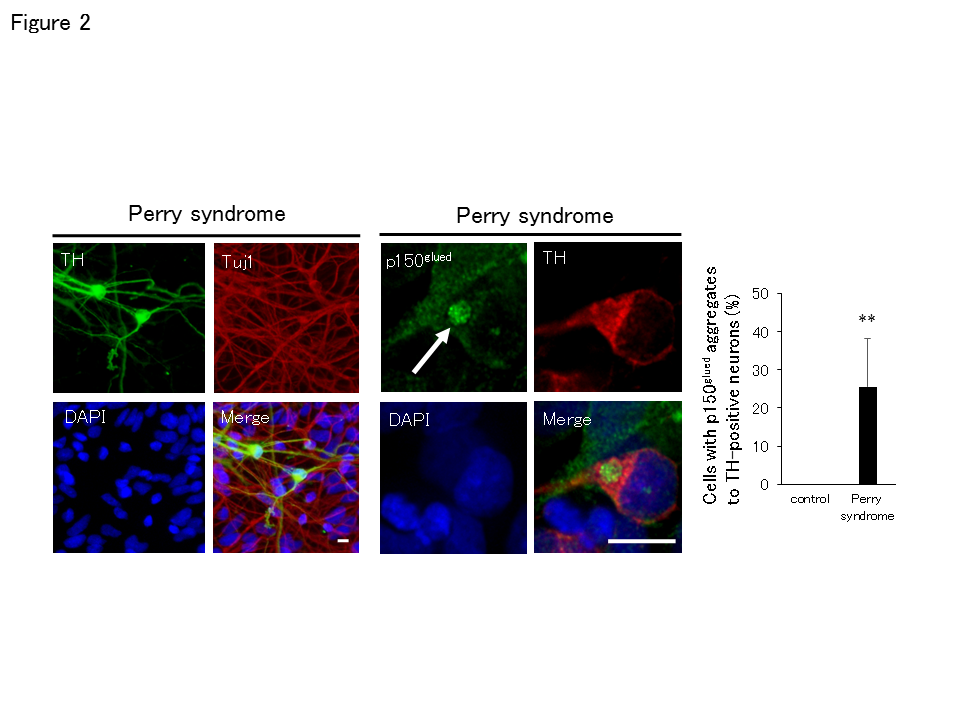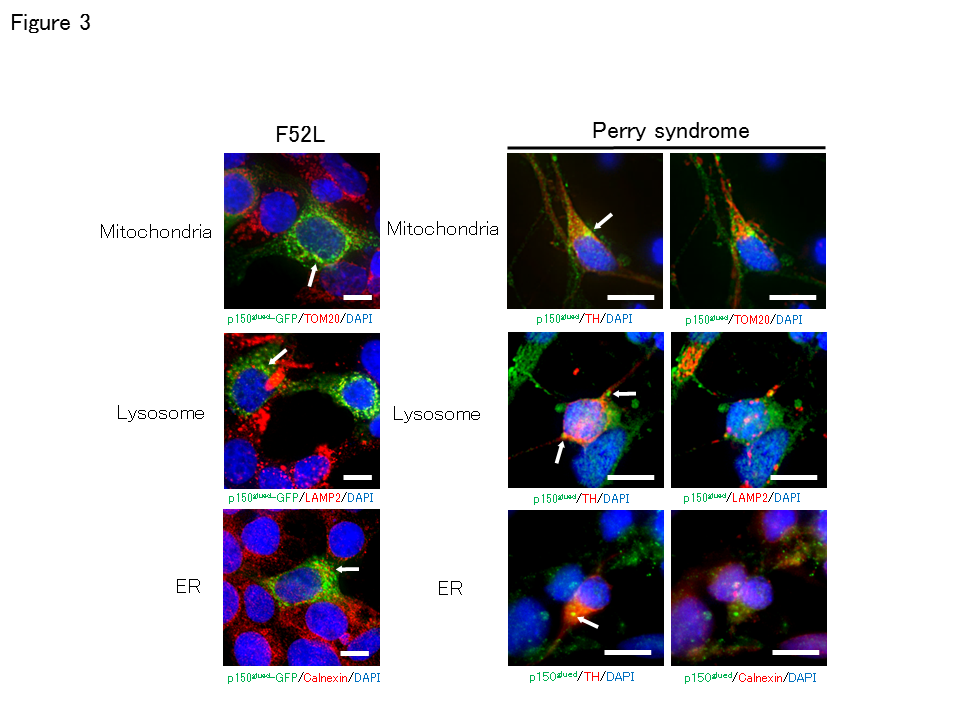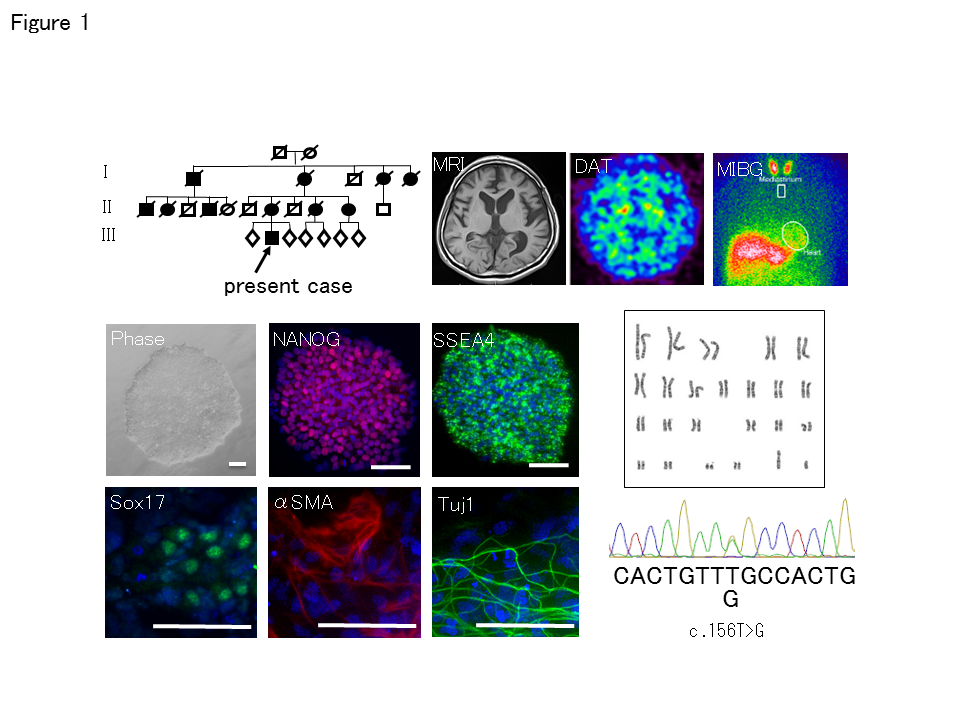Session Information
Date: Thursday, June 8, 2017
Session Title: Other
Session Time: 1:15pm-2:45pm
Location: Exhibit Hall C
Objective: To develop a novel model of Perry syndrome using induced pluripotent stem cell (iPSC)-derived neurons.
Background: Perry syndrome is a rare autosomal dominant disorder clinically characterized by parkinsonism with depression/apathy, weight loss, and central hypoventilation. Histological studies of postmortem brain tissue showed severe neuronal loss and gliosis in the substantia nigra, and transactive response DNA-binding protein 43 (TDP-43) and dynactin-positive inclusions in the neurons of the basal ganglia and brainstem including substantia nigra. Eight point mutations have been identified: F52L, G71A, G67D, G71R, G71E, T72P, Q74P, and Y78C located in exon 2 of DCTN1. A novel disease model is required because the disease pathomechanisms still remain unclear.
Methods: We described clinical and neuroimaging investigations of the Perry syndrome patient with F52L mutation in DCTN1, and generated iPSCs from the patient (figure 1). To recapitulate Perry syndrome pathology, we first used HEK293T cells transiently transfected with GFP-tagged WT and mutant F52L p150glued. We next differentiated iPSCs into TH-positive neurons. Immunocytochemistry analyses of control and mutant were performed (figure 2, 3).
Results: The patient displayed levodopa responsive parkinsonism. Dopamine transporter single photon emission tomography showed markedly decreased uptake in the striatum, and metaiodobenzylguanidine cardiac scintigraphy also showed decreased uptake (figure 1). HEK293T overexpressing GFP-tagged mutant F52L p150glued cells showed diffuse cytoplasmic distribution with various size of aggregates. We detected various size of p150glued aggregates in cytoplasm and neurites in only patient iPSC-derived TH-positive neurons (figure 2). p150glued aggregates partially co-localized with mitochondria, lysosomes and ER in HEK293T overexpressing GFP-tagged mutant F52L p150glued cells and TH-positive neurons (figure 3). In both HEK293T cells and TH-positive neurons, p150glued aggregates were not positive for TDP-43.
Conclusions: TH-positive neurons derived from Perry syndrome iPSCs recapitulated an aspect of the disease phenotype of Perry syndrome.
References: This abstract has been published in Parkinsonism Relat Disord. 2016;30:67-72.
To cite this abstract in AMA style:
T. Mishima, T. Ishikawa, K. Imamura, T. Kondo, Y. Koshiba, R. Takahashi, J. Takahashi, A. Watanabe, N. Fujii, Y. Tsuboi, H. Inoue. Disease modeling for Perry syndrome using patient induced pluripotent stem cells [abstract]. Mov Disord. 2017; 32 (suppl 2). https://www.mdsabstracts.org/abstract/disease-modeling-for-perry-syndrome-using-patient-induced-pluripotent-stem-cells/. Accessed December 25, 2025.« Back to 2017 International Congress
MDS Abstracts - https://www.mdsabstracts.org/abstract/disease-modeling-for-perry-syndrome-using-patient-induced-pluripotent-stem-cells/



